Milan 2014 preview: Wire and Levante, the two new projects by Alessandro Zambelli at the MDW14
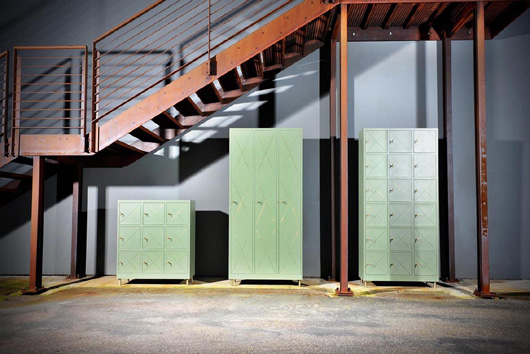
Designer Alessandro Zambelli presents his two new proposals during the Milan Design Week 2014.WIRE is exhibited inside Spazio Rossana Orlandi. The mood of the new metal furniture collection for Seletti is a strange balancing act between retro, minimalist aesthetics and futuristic touches. LEVANTE is exhibited in Ventura Lambrate. This new project for the designer collective PADIGLIONEITALIA investigates the creative side of the Mediterranean unpredictability.
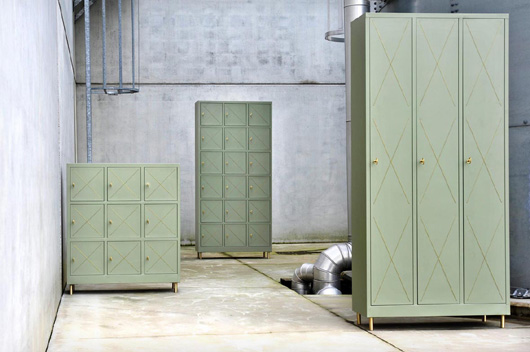
WIRE: the new metal furniture collection designed by Alessandro Zambelli for Seletti
The collection's historical roots lie at the very end of the nineteenth century, in the Vienna Secession and the dawn of Italy's ‘Stile Liberty’. Josef Hoffmann and Gustav Klimt worked together on their grand design, the Stoclet Palace in Brussels. A glance at its architecture, its use of space and its furnishings is sufficient to suggest that this collection could feel at ease here, in this great masterpiece of European Art Nouveau. WIRE, the new design conceived by Alessandro Zambelli for Seletti, seems evocative of the period. It is one of the preview displays which the designer and the Mantuan manufacturer unveil inside Spazio Rossana Orlandi on the occasion of the Salone del Mobile in Milan.
WIRE is a line of furniture accessories in painted steel (colours: pastel cream, salmon pink and musk green). There are five pieces, with brass wire fittings: a chest of drawers, a wardrobe with two doors, a cupboard with three doors, a full-height storage unit and a mid-height storage unit. The contrasting metalwork results in some unexpected, decorative effects. Fine lines run across the front of each piece of furniture. Little more than a trace, yet picked out like embroidery, they finally thicken, in perfect geometry, to reveal a glint of gold. These flashes of light are contrived for reflection off surfaces, in three-dimensional surprises. A playful detail, somewhere between whimsical, ironic and functional, lies at the heart of WIRE. Punctuating the face at regular intervals, the brass wire transforms itself into a key with an almost surreal function. This is a structural component. You cannot actually turn it, though it has every semblance of a key and handle. The mood of the collection is a strange balancing act between retro, minimalist aesthetics and futuristic touches. It moves forward, yet harks back; nostalgic, it dares to dream; its vision, the fruit of memory.
WIRE is exhibited inside Spazio Rossana Orlandi at Via Matteo Bandello 14 in Milan, a stone's throw from the Basilica of Sant’Ambrogio in the city centre. The venue is a temple of Milanese design, an ex-tie factory which plays host to the collection on part of its first floor, the former fabric store.
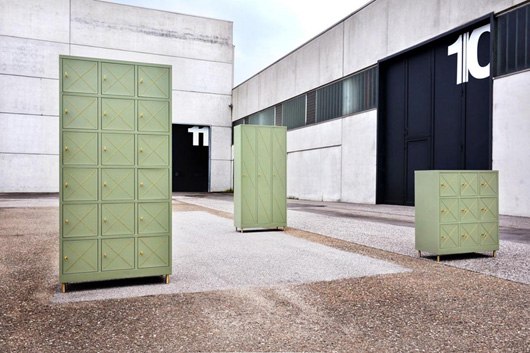
“Levante” by Alessandro Zambelli: the Great Sea in one object
Unpredictability is creative. In the Latin world, remote from set patterns and standards, it is part and parcel of everyday life. That submerged creativity, associated with the Mediterranean, has inspired the exhibition “Mediterranean Dysfunction” by the designer collective PADIGLIONEITALIA. The venue is Via Oslavia 3, in Ventura Lambrate, the district of Milan most closely linked with independent design. In Alessandro Zambelli's “Levante” project, Mare Nostrum is a sea of people and objects. They share positive dysfunctions open to investigation by anthropology. In fact “Levante” views dysfunction as a Mediterranean flair for improvising practical solutions, for deploying the useless to good effect, for finding a way round. Bowls which wobble are a practical example of dysfunction. The problem is solved by wedging a ‘levante’ or prop underneath, restabilising the vessels. The act of propping is creatively dysfunctional. It embodies this Latin talent for finding an immediate solution to one of life's pressing needs. Being in need entails openness to other people as a completion of oneself.
This impelled the Mediterranean peoples to set sail, borne on the easterly wind from the Levante, in search of new trade, new exchanges. Perhaps this is why PADIGLIONEITALIA is exhibiting in Ventura Lambrate, like a Latin island ready to hold its own in the sea of international design.
Finally, the project's choice of a cork as its prop derives from the rural custom of using of this material to mend everyday objects. The stopper and the earthenware of the bowls are also evocative of wine, one of the most important symbols of Mediterranean culture.
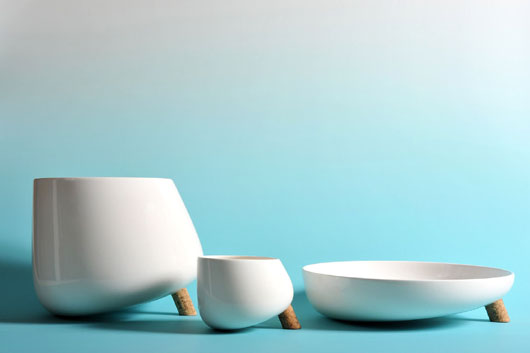
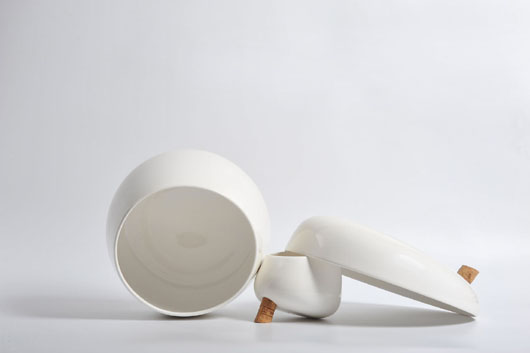
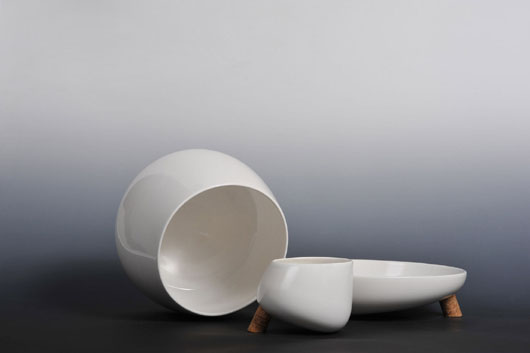
Information and images courtesy of Alessandro Zambelli
Read more news related Alessandro Zambelli plublished at Infurma
News Infurma:
Online Magazine of the International Habitat Portal. Design, Contract, Interior Design, Furniture, Lighting and Decoration
